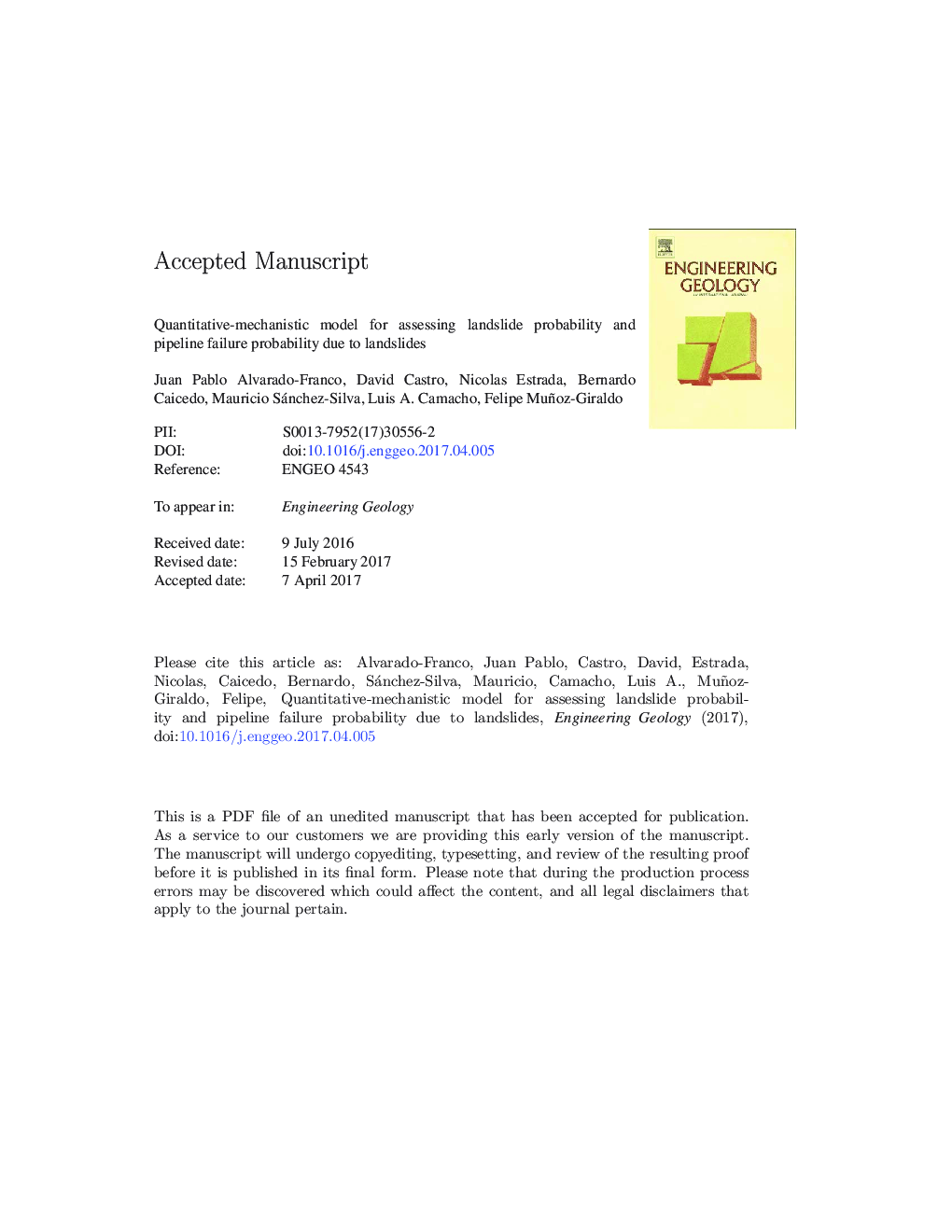| Article ID | Journal | Published Year | Pages | File Type |
|---|---|---|---|---|
| 5787627 | Engineering Geology | 2017 | 19 Pages |
Abstract
This paper presents a quantitative-mechanistic model for assessing the probability of failure along pipelines due to their interaction with landslides. The model input parameters include elevation, soil thickness, soil mechanical and hydraulic properties, rainfall and evapotranspiration series, pipeline alignment, and pipe properties. Given that a high level of uncertainty characterizes some of these properties, they can be defined as probability density functions. The landslide occurrence and pipeline failure probabilities in each point are thus estimated by means of Monte Carlo simulations, and these probabilities are mapped to hazard exposure levels using a linguistic scale. Finally, in order to illustrate the capabilities of the model, a pipeline in central Colombia is used as a case study. The model is characterized by its simplicity, its computational efficiency, and its independence from calibration procedures at the slope scale. In this sense, it can be seen as a valuable tool that complements existing methodologies and can provide useful information to support decision-making processes.
Keywords
Related Topics
Physical Sciences and Engineering
Earth and Planetary Sciences
Geotechnical Engineering and Engineering Geology
Authors
Juan Pablo Alvarado-Franco, David Castro, Nicolas Estrada, Bernardo Caicedo, Mauricio Sánchez-Silva, Luis A. Camacho, Felipe Muñoz,
